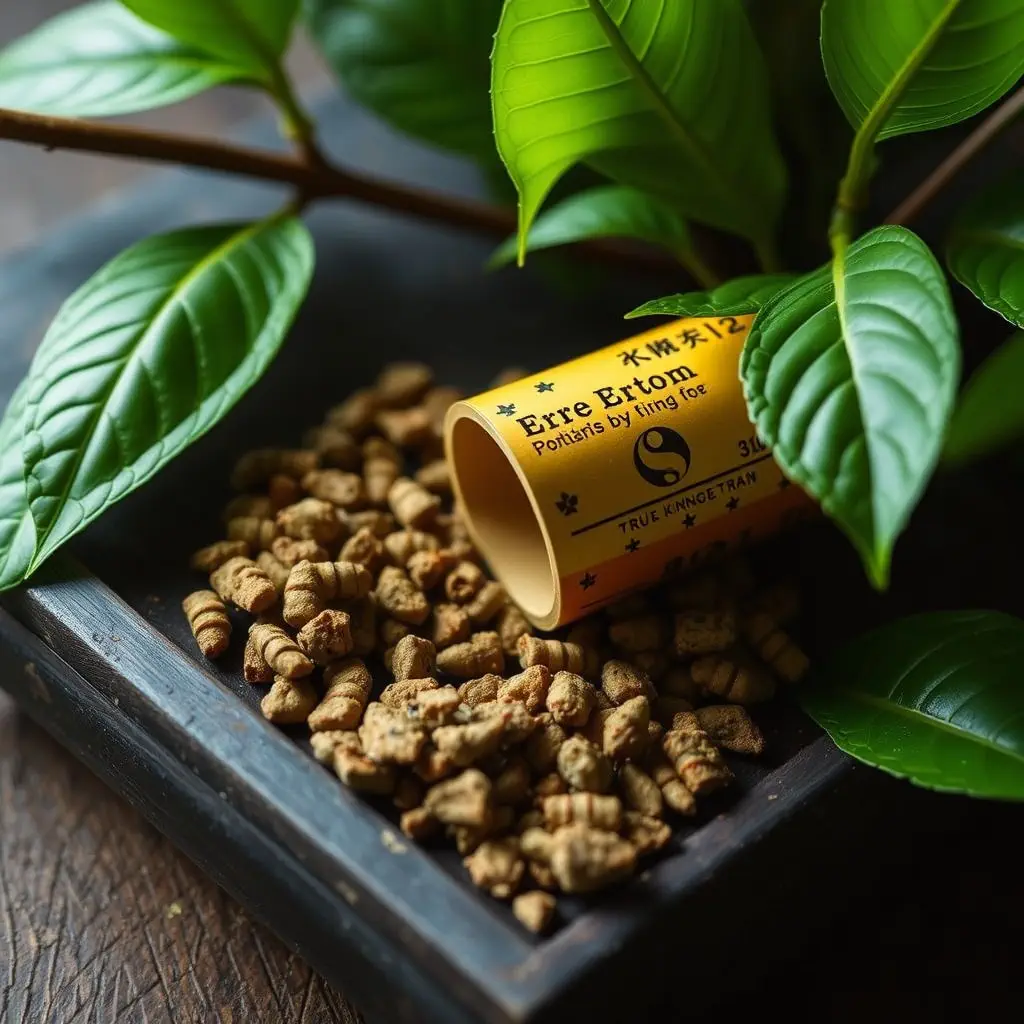The article examines the pain-relieving potential of Kratom, particularly the Lotus Blue Flower strain, for joint pain management. It focuses on the alkaloid 7-Hydroxymitragynine, found abundantly in Lotus Blue Flower, which interacts with opioid receptors to provide strong analgesic effects. This strain is noted for its balanced euphoric and painkilling properties, offering a natural alternative to those suffering from chronic joint discomfort. Anecdotal and scientific evidence supports the efficacy of Kratom's active ingredients in modulating pain, with users frequently reporting positive outcomes when using Lotus Blue Flower. The dual action of the strain makes it an attractive option for individuals looking to manage joint pain without relying on traditional medications. It is important to consult healthcare providers before using Kratom due to individual variation in its effects. The section also covers the history and use of Kratom, a plant from Southeast Asia with alkaloids like mitragynine and 7-hydroxymitragynine, which are being studied for their pain management benefits and potential as a natural alternative to synthetic pain medications, with the added advantage of fewer side effects. Lotus Blue Flower is highlighted for its ethical sourcing of high-quality kratom leaves, preserving the plant's traditional benefits and positioning itself as a reputable provider of botanical solutions in the health and wellness industry.
Exploring the potential of kratom as a natural remedy for joint pain, this article delves into its active compounds, particularly 7-Hydroxymitragynine, and sheds light on the botanical origins known as Lotus Blue Flower. We will examine the scientific mechanisms behind its analgesic effects, assess clinical evidence for its efficacy and safety, and offer a balanced perspective on integrating kratom into an overall joint pain management strategy. From complementary therapies to diet and lifestyle adjustments, this comprehensive guide will navigate the legal considerations and ethical implications of using kratom, ensuring readers are well-informed about this alternative approach to arthritis relief.
- Understanding Joint Pain Relief through Kratom and the Role of Mitragyna Hydroxyhomotropodiaethylate (7-Hydroxymitragynine)
- 1. Overview of Kratom's Active Compounds
- 2. The Botanical Origins of Kratom: Insights from Lotus Blue Flower
Understanding Joint Pain Relief through Kratom and the Role of Mitragyna Hydroxyhomotropodiaethylate (7-Hydroxymitragynine)

Understanding joint pain relief through Kratom involves a deep dive into the alkaloids present within this botanical substance. Among these, Mitragyna Hydroxyhomotropodiaethylate, commonly known as 7-Hydroxymitragynine, plays a pivotal role in its analgesic properties. This compound is found in strains like the Lotus Blue Flower, which is renowned for its high alkaloid content and potent effects. Kratom’s interaction with the body’s opioid receptors can provide significant pain relief, making it a subject of growing interest for those suffering from joint discomfort. The Lotus Blue Flower kratom strain, in particular, is often highlighted due to its balance of euphoric and analgesic effects, which are attributed to the presence of 7-Hydroxymitragynine. This alkaloid is considered a key player in the pain-relieving effects of kratom, offering hope to individuals seeking natural alternatives for joint pain management.
The efficacy of Kratom in joint pain relief is further supported by anecdotal evidence and scientific research that suggests its active ingredients, including 7-Hydroxymitragynine, can modulate the body’s response to pain. The Lotus Blue Flower strain, with its rich concentration of this alkaloid, is thought to be particularly beneficial for those experiencing chronic joint pain. Users often report a reduction in discomfort levels, accompanied by an improved sense of well-being. This dual action makes kratom a compelling option for those looking to mitigate the symptoms of joint pain without relying on traditional pharmaceuticals. However, it is crucial for individuals to consult healthcare professionals before integrating Kratom into their health regimen, as individual responses to Kratom can vary widely.
1. Overview of Kratom's Active Compounds

Mitragyna speciosa, commonly known as kratom, is a tropical deciduous tree native to Southeast Asia, belonging to the Rubiaceae family. Often associated with the lotus blue flower due to its similar leaf shape and size, kratom has been traditionally used by local populations for its stimulant and sedative properties. The efficacy of kratom in pain relief is attributed to its active compounds, alkaloids such as mitragynine and 7-hydroxymitragynine, which are found primarily in the leaves of the plant. These alkaloids interact with the opioid receptors in the brain, providing analgesic effects that can help alleviate chronic pain. Additionally, kratom contains other compounds like speciogynine and 7-acetoxymitragynine, which contribute to its unique pharmacological profile, making it a subject of interest for those seeking natural alternatives to manage joint pain. The precise mechanisms by which these alkaloids exert their effects are still being researched, but their role in pain relief is supported by both anecdotal and scientific evidence, offering hope for individuals looking to mitigate discomfort without the side effects commonly associated with synthetic painkillers.
2. The Botanical Origins of Kratom: Insights from Lotus Blue Flower

Kratom, a tropical deciduous tree native to Southeast Asia, has long been recognized for its medicinal properties, particularly in alleviating joint pain. The botanical origins of kratom are deeply rooted in the rich biodiversity of countries like Thailand, Indonesia, and Malaysia, where it has been traditionally used by local populations. Mitragyna speciosa, commonly known as kratom, belongs to the Rubiaceae family and shares a close relation with the coffee plant, Coffea arabica. The leaves of this plant contain alkaloids, such as mitragynine and 7-hydroxymitragynine, which are believed to be responsible for its pain-relieving effects. Lotus Blue Flower, a brand that sources and provides kratom products, emphasizes the natural and unadulterated essence of kratom leaves, highlighting their potential in joint pain relief without the need for synthetic analogues. The company’s commitment to ethical sourcing ensures that the kratom they provide is of high quality and maintains the integrity of the plant’s natural properties, offering a botanical solution to those seeking relief from joint discomfort. Lotus Blue Flower’s dedication to preserving the authentic characteristics of kratom ensures that consumers can experience its traditional benefits in a modern context, making it an attractive option for those looking to explore natural remedies for joint pain.
Kratom, derived from the leaves of the Lotus blue flower, emerges as a multifaceted approach for joint pain relief. The article delved into the intricate workings of kratom’s active compounds, particularly highlighting the significant role of 7-Hydroxymitragynine. Understanding these components provides a solid foundation for considering how kratom might be integrated into pain management strategies. While further research is necessary to fully comprehend its efficacy and potential long-term effects, the insights gleaned from the Lotus blue flower’s properties offer a promising perspective on natural alternatives for joint pain relief. As such, kratom warrants attention as a viable option for those seeking respite from joint discomfort.






